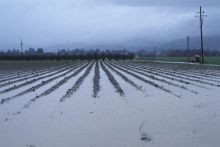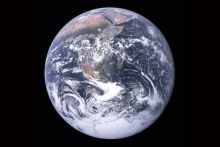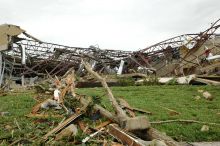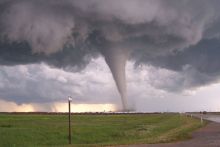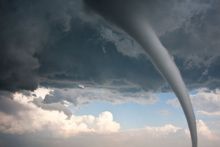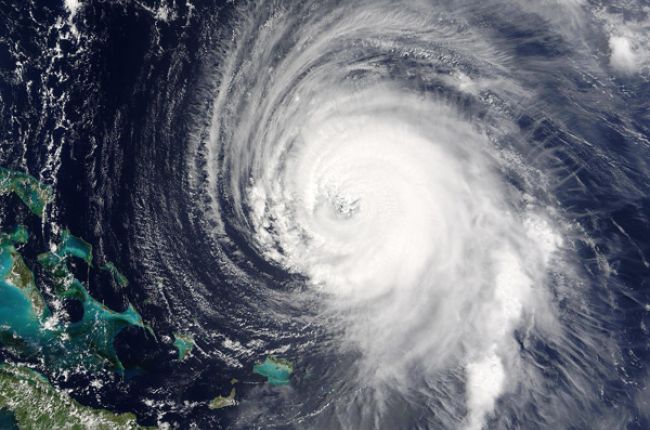
Information on this page was collected from the source acknowledged below:
National Oceanic and Atmospheric Administration FAQs:
"Contributed by Chris Landsea (National Hurricane Center)
In November 2006 the global community of tropical cyclone researchers and forecasters as met at the 6th International Workshop on Tropical Cyclones of the World Meteorological Organization in San Jose, Costa Rica. They released a statement on the links between anthropogenic (human-induced) climate change and tropical cyclones, including hurricanes and typhoons. The following is a summary of their report.
- There have been a number of recent high-impact tropical cyclone events around the globe. These include 10 landfalling tropical cyclones in Japan in 2004, five tropical cyclones affecting the Cook Islands in a five-week period in 2005, Cyclone Gafilo in Madagascar in 2004, Cyclone Larry in Australia in 2006, Typhoon Saomai in China in 2006, and the extremely active 2004 and 2005 Atlantic tropical cyclone seasons - including the catastrophic socio-economic impact of Hurricane Katrina.
- Some recent scientific articles have reported a large increase in tropical cyclone energy, numbers, and wind-speeds in some regions during the last few decades in association with warmer sea surface temperatures. Other studies report that changes in observational techniques and instrumentation are responsible for these increases.
Consensus Statements by International Workshop on Tropical Cyclones-VI (IWTC-VI) Participants :
- Though there is evidence both for and against the existence of a detectable anthropogenic signal in the tropical cyclone climate record to date, no firm conclusion can be made on this point.
- No individual tropical cyclone can be directly attributed to climate change.
- The recent increase in societal impact from tropical cyclones has largely been caused by rising concentrations of population and infrastructure in coastal regions.
- Tropical cyclone wind-speed monitoring has changed dramatically over the last few decades, leading to difficulties in determining accurate trends.
- There is an observed multi-decadal variability of tropical cyclones in some regions whose causes, whether natural, anthropogenic or a combination, are currently being debated. This variability makes detecting any long-term trends in tropical cyclone activity difficult.
- It is likely that some increase in tropical cyclone peak wind-speed and rainfall will occur if the climate continues to warm. Model studies and theory project a 3-5% increase in wind-speed per degree Celsius increase of tropical sea surface temperatures.
- There is an inconsistency between the small changes in wind-speed projected by theory and modeling versus large changes reported by some observational studies.
- Although recent climate model simulations project a decrease or no change in global tropical cyclone numbers in a warmer climate, there is low confidence in this projection. In addition, it is unknown how tropical cyclone tracks or areas of impact will change in the future.
- Large regional variations exist in methods used to monitor tropical cyclones. Also, most regions have no measurements by instrumented aircraft. These significant limitations will continue to make detection of trends difficult.
- If the projected rise in sea level due to global warming occurs, then the vulnerability to tropical cyclone storm surge flooding would increase."
Learn More:
- Global Warming and Hurricanes: An Overview of Current Research Results (Web Article), National Oceanic and Atmospheric Administration
A technical overview of what is currently known about the impact of rising global temperatures on Atlantic hurricanes.
- 2014 National Climate Assessment: Changes in Hurricanes (Website), U.S. Global Change Research Program
Overview of recent and projected future changes in hurricanes, as well as an assessment of the confidence with which certain conclusions can be made.
- Present Day Climate Change (Factsheet), American Geosciences Institute
Factsheet summarizing how Earth's climate is monitored, influences on the climate, and evidence for present-day climate change.
- Assessing, Mitigating, and Communicating Flood Risk (Webinar), American Geosciences Institute
2017 Webinar on flood risk assessment, mitigation, and communication efforts in the U.S. from national to state and local levels - includes many additional resources on flood risk in your area, as well as the effects of 2016's Hurricane Matthew in South Carolina

